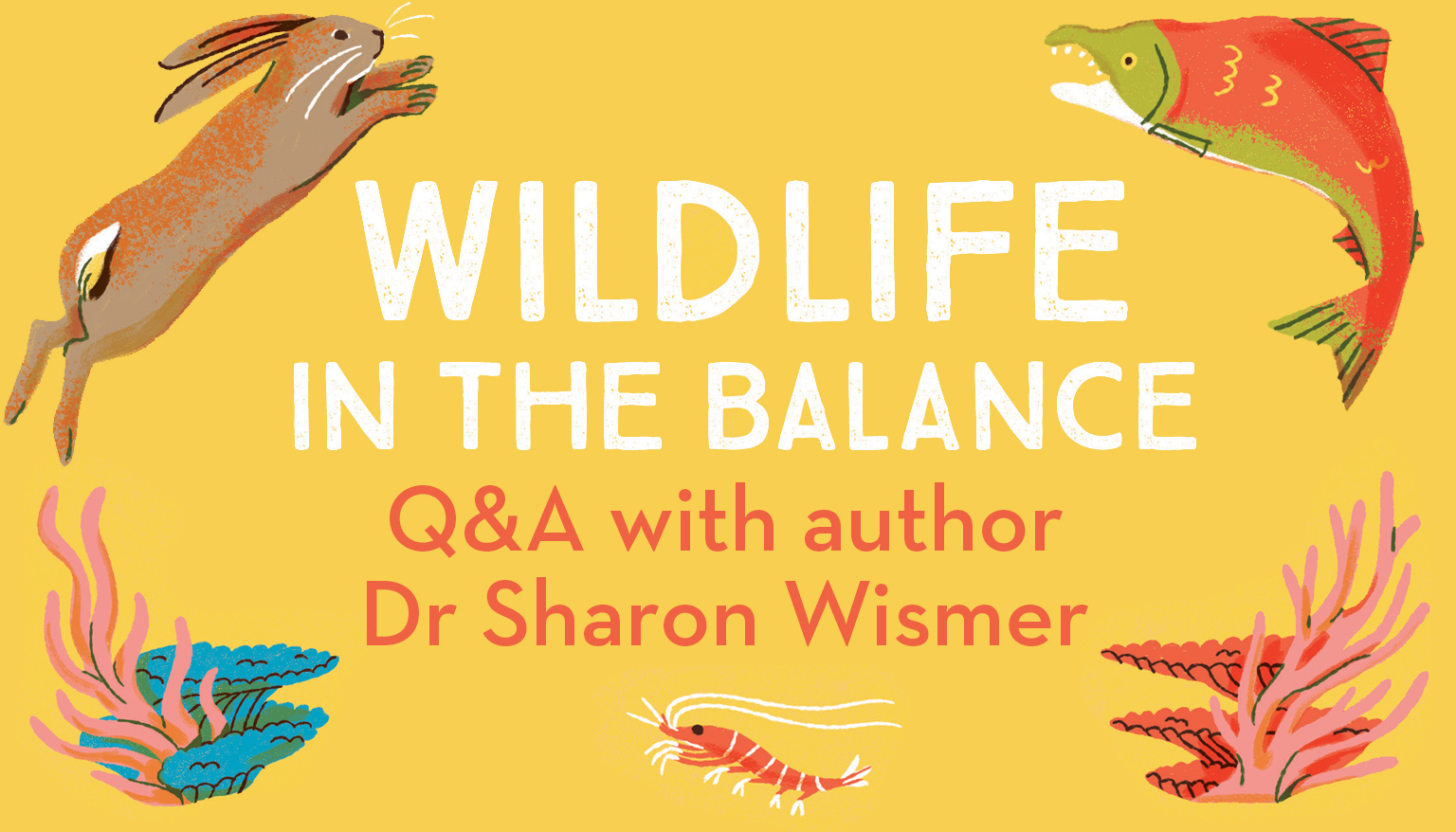
Dr Sharon Wismer is the author of our non-fiction title, Wildlife in the Balance: The Species that Shape the Earth’s Ecosystem. Read on to discover more about the inspirations behind the book, as well as Sharon’s thoughts on conservation and looking after our planet.
Hi, Sharon! Tell us a bit about yourself, where do you live, and what’s your day job?
I am a marine ecologist and live in Switzerland with my husband, two children and a house full of lively pets! I’m passionate about sharing the wonders of science and nature with kids, which has inspired my shift from academic research – that focused on tropical coral reefs, climate change and fish behaviour – to science communication. As a children’s non-fiction author, my goal is to make science and emerging research fun and accessible, and I hope to inspire the next generation of young naturalists. I am currently funded by the Swiss National Science Foundation and lead an AGORA Science Communications project at the University of Neuchatel, Switzerland.
What’s Wildlife in the Balance about and why should readers pick it up?
Wildlife in the Balance is an engaging and insightful exploration into the intricate web of life that sustains our planet. This book dives deep into the critical roles that keystone species play in maintaining the health and balance of Earth’s ecosystems and showcases the many ways they impact the species around them. In some cases, entire ecosystems depend on a single species! From elephants to wolves, honeybees to beavers and Namibian gobies to Tibetan pika – this book introduces readers to keystone species across all major biomes (aquatic, grassland, forest, desert and tundra) and across all continents, while showcasing modern conservation practices for Earth’s most important and precious species.
I believe this book is a must-read as it provides a novel perspective for a children’s wildlife book. Children not only learn about different ecosystems and the species that live there, but importantly, why certain species are functionally important and what would happen if they are removed. Just as people have important jobs in human societies, like farmers, sanitation workers and doctors etc., animal communities have species that play a central role to the health and functioning of their ecosystems. These species play such a critical role that without them, their ecosystems could collapse. I hope this perspective gives children a new appreciation and understanding of the delicate balance that exists in nature.
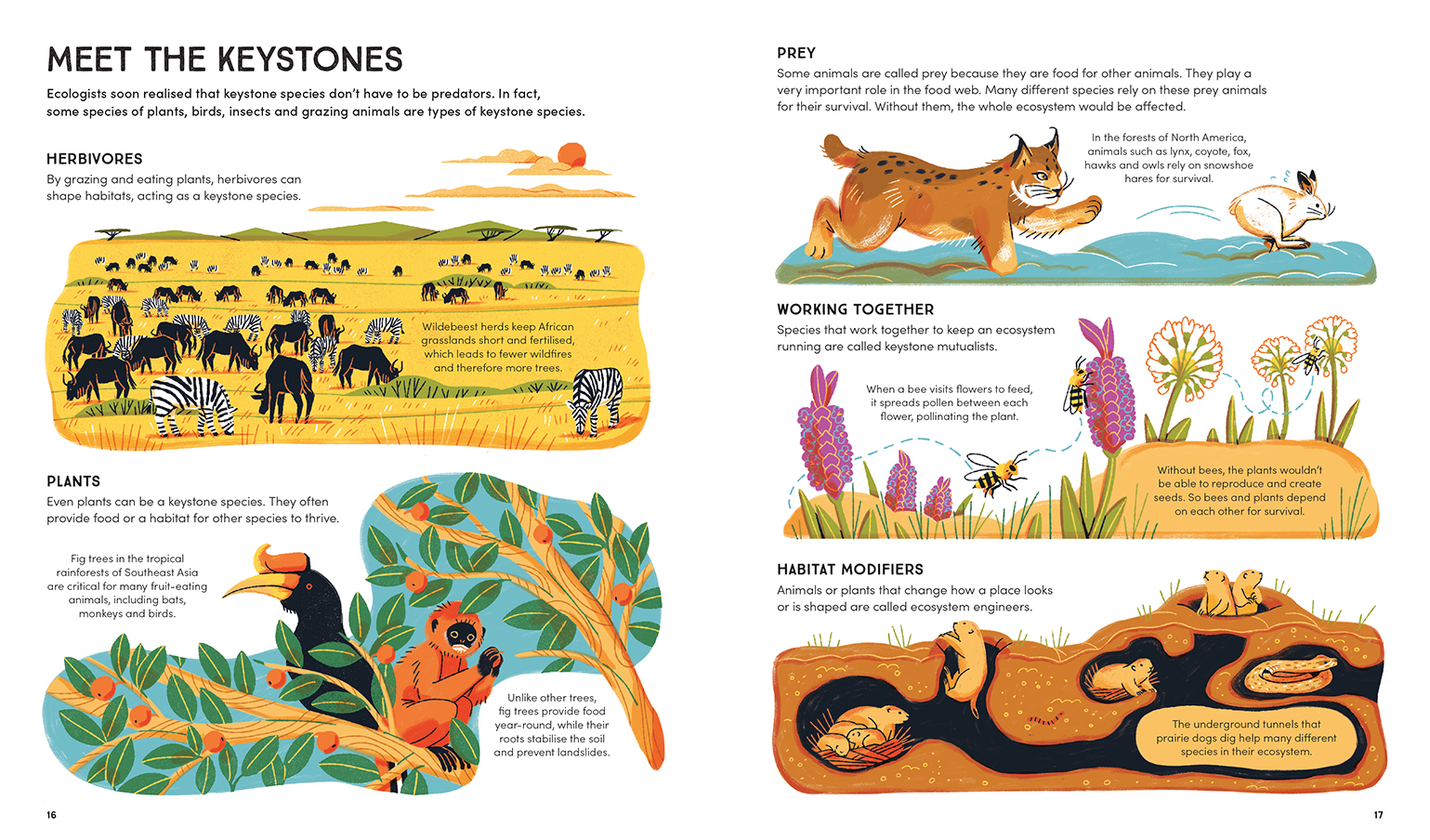
What inspired you to write the book?
My own children, Sophie and Julien! They ask endless questions and have a genuine interest and sense of awe for the world around them. From tiny, creepy crawlers to prehistoric dinosaurs, to just plain, fluffy cats – they love it all. It is my pleasure to nurture that curiosity and foster their learning on a daily basis. I love diving deep into the scientific literature to find ‘hidden’ science stories that children will find fascinating. Some children, however, may not receive the same exposure. As famously demonstrated by a study published in Science, UK children aged 4 to 11 were much better at identifying fictitious Pokémon characters than local British plants and animals. I hope the range of animals and plants covered in Wildlife in the Balance gives kids a glimpse not only into their own ‘backyard’ but also into exotic species and ecosystems from faraway continents. I believe children’s non-fiction books are excellent tools for conveying science in a beautiful and lasting way, as parents and children often read together and learn new things in a shared experience.
Wildlife in the Balance is beautifully illustrated by Terri Po, what’s your favourite illustration and why?
I am definitely blown away by all the beautiful illustrations and thoughtful designs that bring this book to life. I love how each section uses a cohesive colour palette that is perfectly suited for each ecosystem. I especially love the bearded goby and salmon spreads.
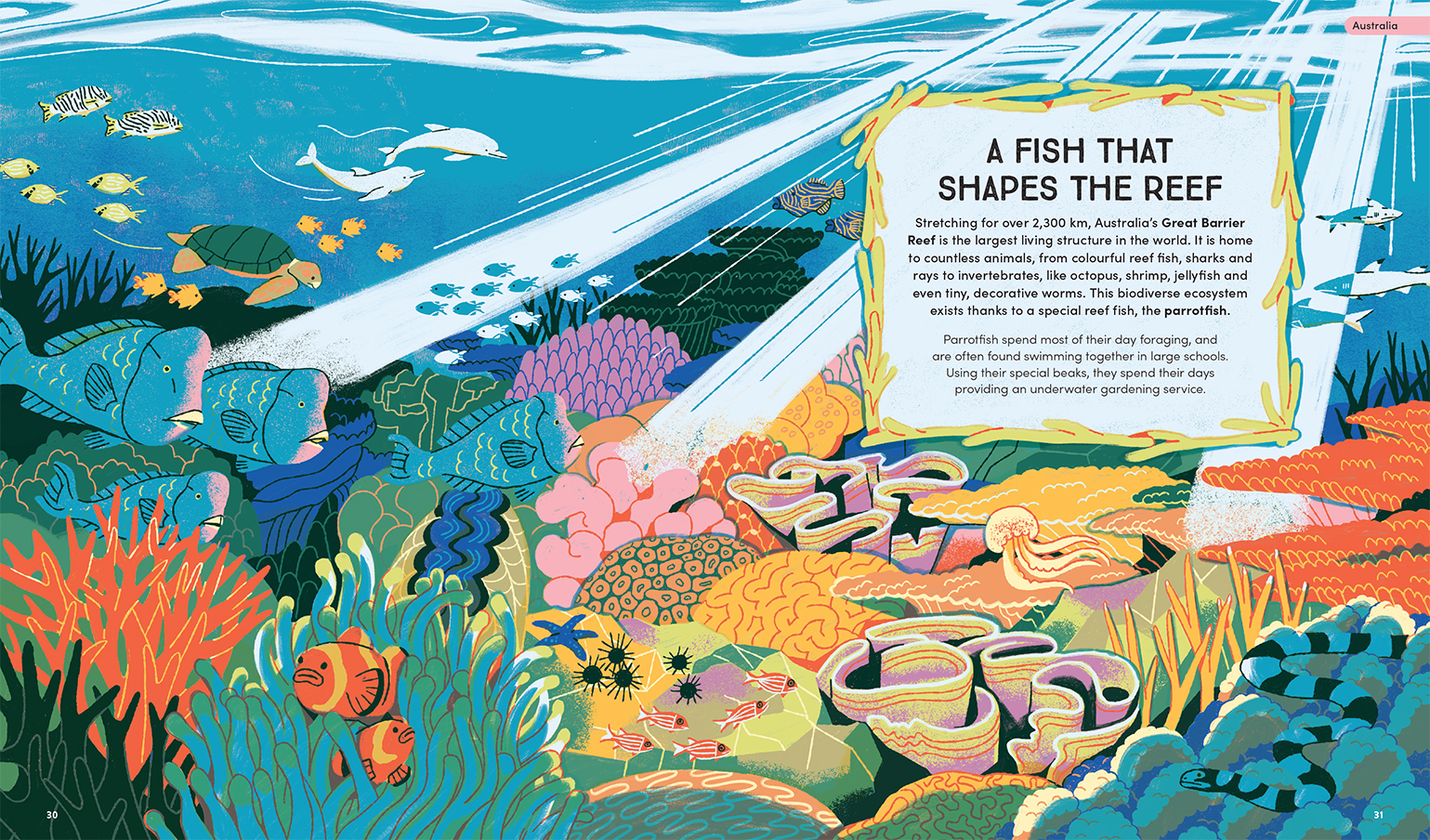
You discuss conservation in the book, why is protecting our planet so important to you and why should it be important for readers?
Protecting the natural world is essential for maintaining the health of our planet and ensuring the survival of countless species. We are intricately linked to the natural world and depend on healthy rivers, oceans, forests, soils and air for our own survival and well-being. Additionally, diverse and healthy ecosystems offer countless benefits. They help regulate the climate, preventing soil erosion and support incredible biodiversity, which in turn contributes to the resilience and adaptability of life on Earth. By safeguarding the natural world, we preserve these invaluable services and contribute to a thriving, vibrant planet for future generations.
If you could give readers one piece of advice to help look after our shared planet, what would it be?
My family definitely lives by the motto ‘think globally, act locally’. I always encourage my children to think of ways to help out in our own community and city, while keeping the bigger problems in the world in mind. By helping local areas, we are able to see the fruits of our labour to encourage more positive change. This can include things like protecting local wilderness areas (which helps combat global climate change), participating in local clean-ups of rivers / beaches / forests and encouraging recycling programs where they are yet to be established (like in schools).
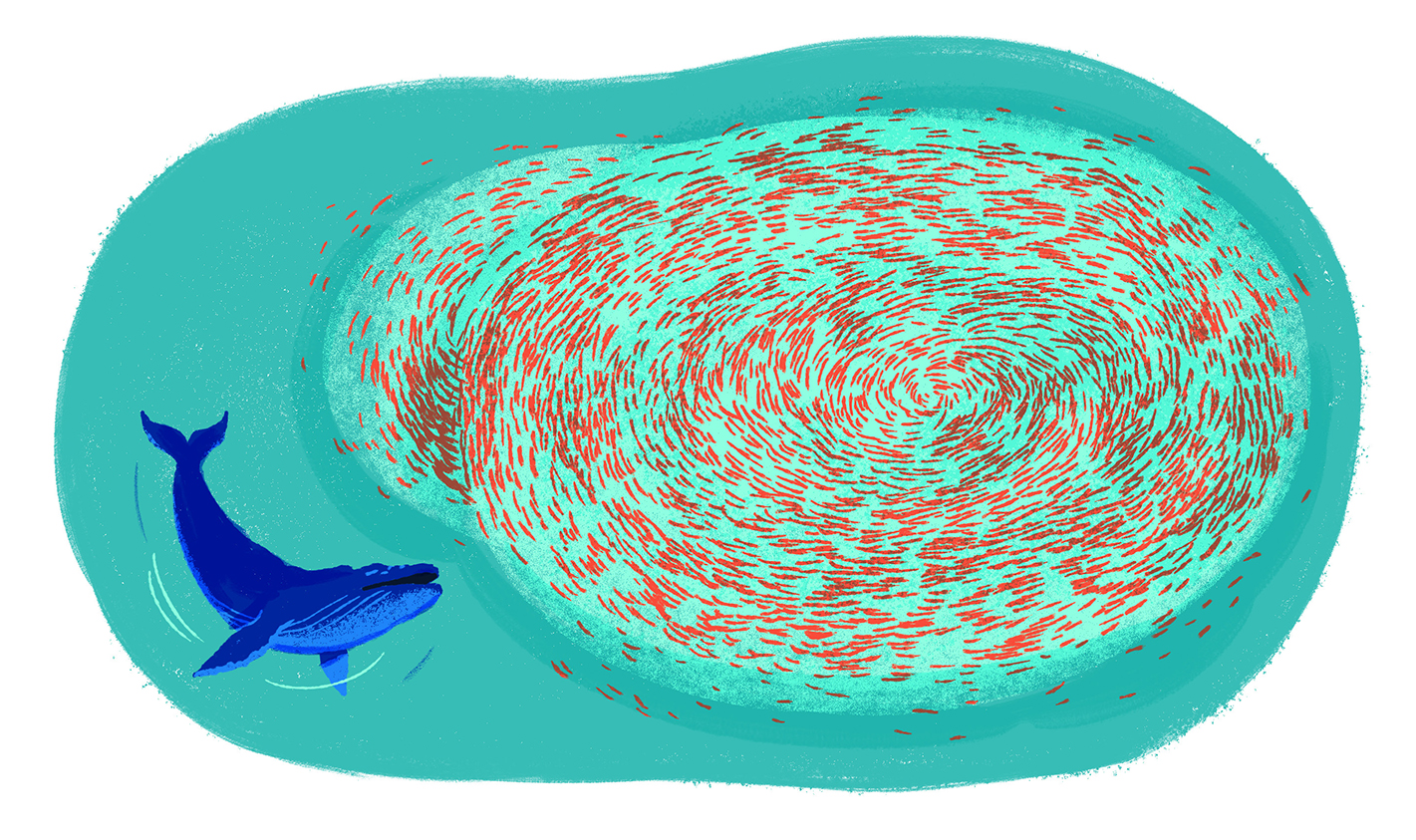
Finally, so many animals are included in this wonderful book, but which are your top three and why?
Given my background in marine biology, I am definitely partial to the marine species! In particular, parrotfish, whose super power I have observed underwater for countless hours. The bearded goby is also quite the treat! This is a species that was unknown to me prior to researching ideas and has me in complete awe. And lastly, I have a soft spot for the European beaver. This is a species I am able to observe in my local river and I love that their populations have been brought back from the brink of extinction – thanks to the efforts of humans! Beavers have finally (and mostly) garnered the respect and adoration they deserve.
Thank you, Sharon!
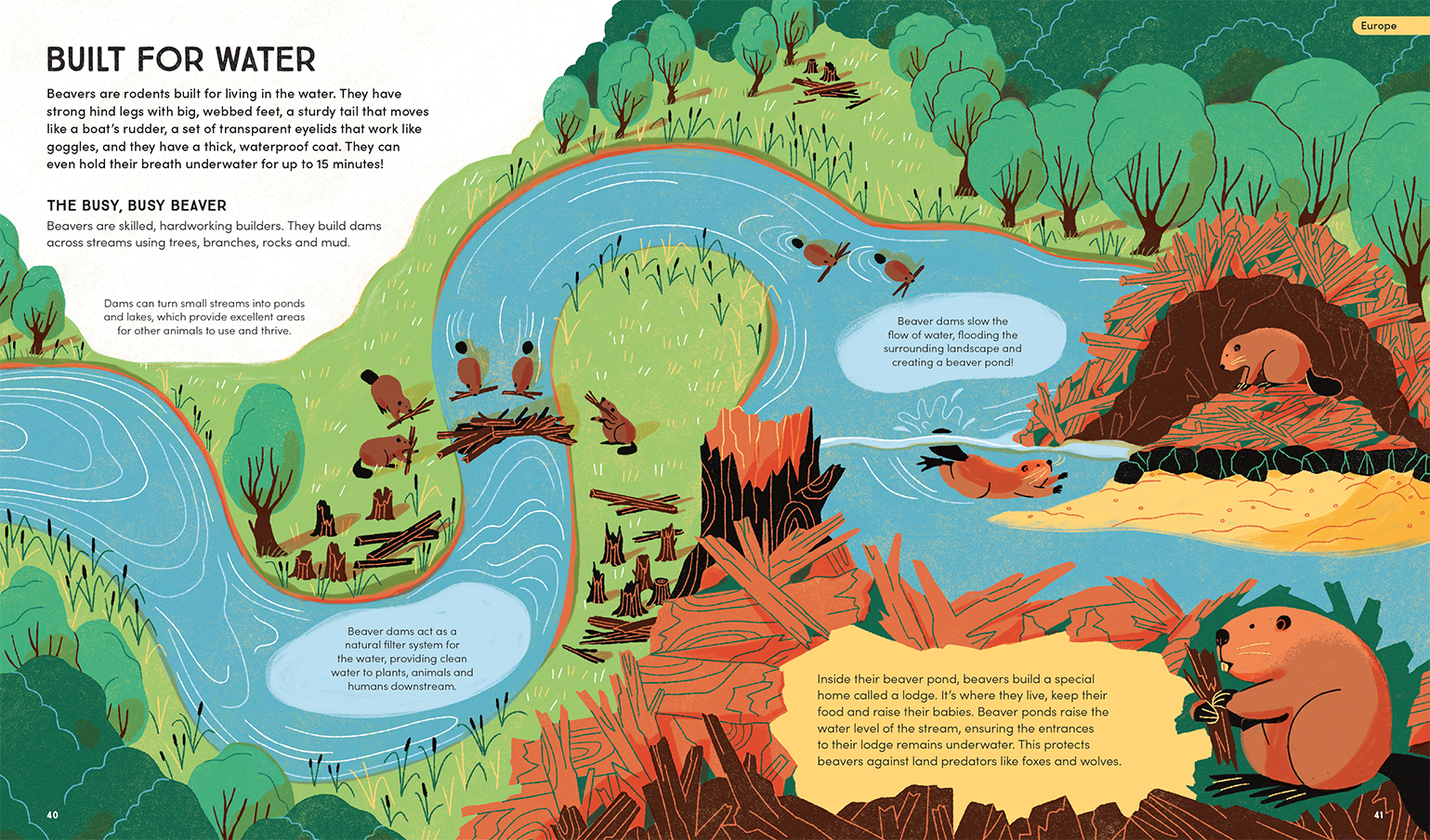
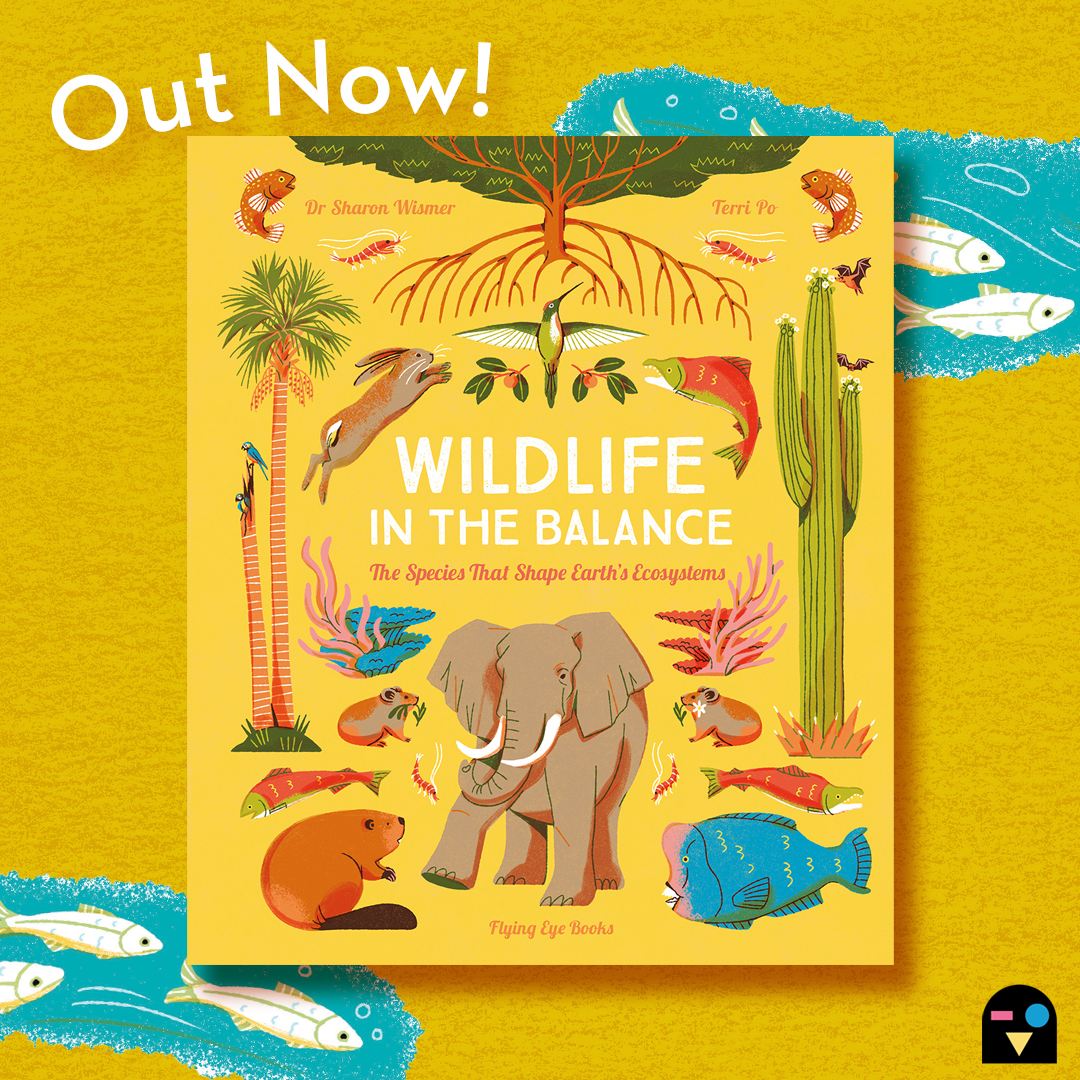
Wildlife in the Balance: The Species that Shape the Earth’s Ecosystem
Written by Dr Sharon Wismer & illustrated by Terri Po
Meet some of our planet’s most important animals and discover the remarkable ways they are helping save our planet.